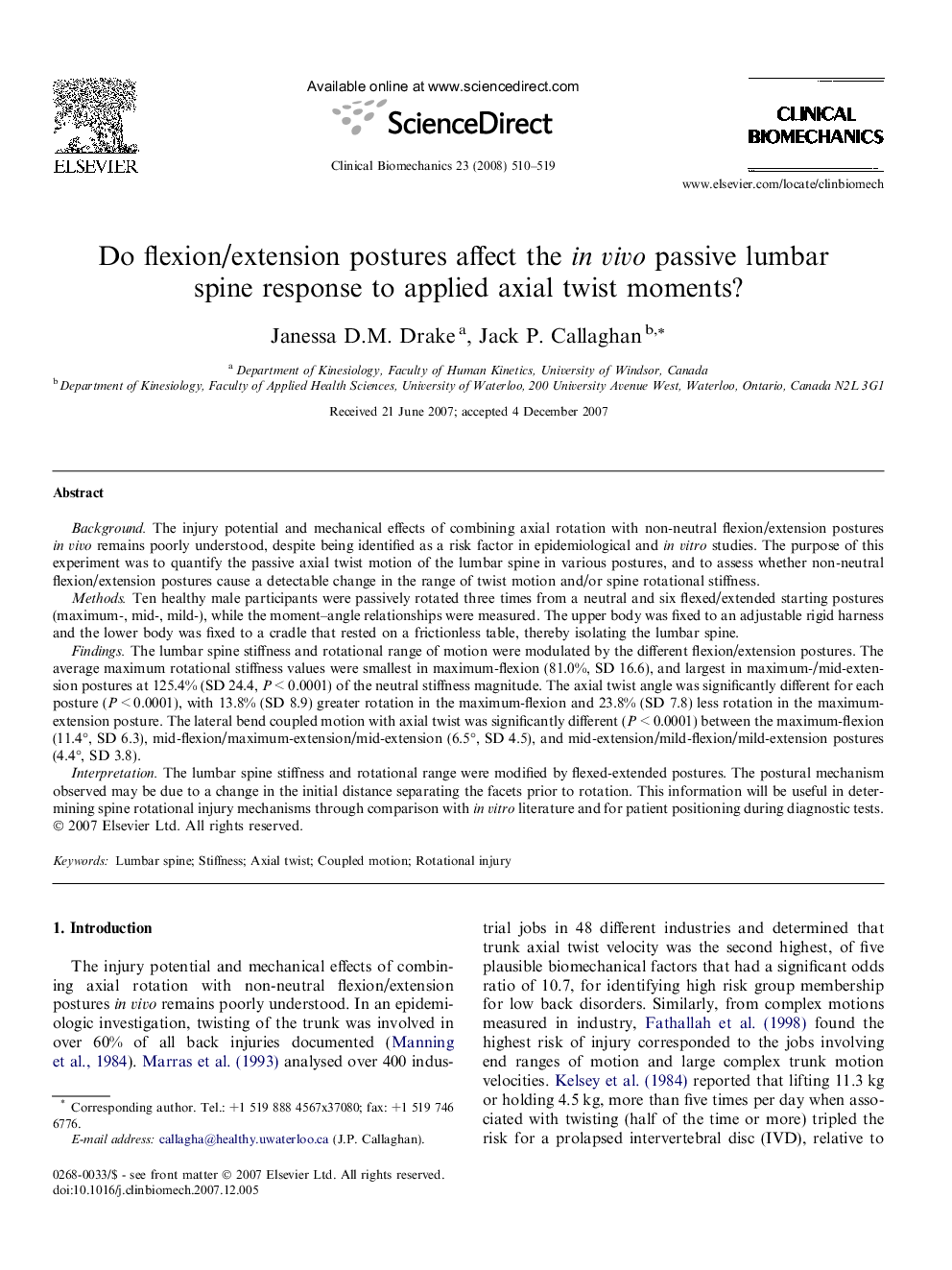| کد مقاله | کد نشریه | سال انتشار | مقاله انگلیسی | نسخه تمام متن |
|---|---|---|---|---|
| 4051456 | 1264994 | 2008 | 10 صفحه PDF | دانلود رایگان |

BackgroundThe injury potential and mechanical effects of combining axial rotation with non-neutral flexion/extension postures in vivo remains poorly understood, despite being identified as a risk factor in epidemiological and in vitro studies. The purpose of this experiment was to quantify the passive axial twist motion of the lumbar spine in various postures, and to assess whether non-neutral flexion/extension postures cause a detectable change in the range of twist motion and/or spine rotational stiffness.MethodsTen healthy male participants were passively rotated three times from a neutral and six flexed/extended starting postures (maximum-, mid-, mild-), while the moment–angle relationships were measured. The upper body was fixed to an adjustable rigid harness and the lower body was fixed to a cradle that rested on a frictionless table, thereby isolating the lumbar spine.FindingsThe lumbar spine stiffness and rotational range of motion were modulated by the different flexion/extension postures. The average maximum rotational stiffness values were smallest in maximum-flexion (81.0%, SD 16.6), and largest in maximum-/mid-extension postures at 125.4% (SD 24.4, P < 0.0001) of the neutral stiffness magnitude. The axial twist angle was significantly different for each posture (P < 0.0001), with 13.8% (SD 8.9) greater rotation in the maximum-flexion and 23.8% (SD 7.8) less rotation in the maximum-extension posture. The lateral bend coupled motion with axial twist was significantly different (P < 0.0001) between the maximum-flexion (11.4°, SD 6.3), mid-flexion/maximum-extension/mid-extension (6.5°, SD 4.5), and mid-extension/mild-flexion/mild-extension postures (4.4°, SD 3.8).InterpretationThe lumbar spine stiffness and rotational range were modified by flexed-extended postures. The postural mechanism observed may be due to a change in the initial distance separating the facets prior to rotation. This information will be useful in determining spine rotational injury mechanisms through comparison with in vitro literature and for patient positioning during diagnostic tests.
Journal: Clinical Biomechanics - Volume 23, Issue 5, June 2008, Pages 510–519